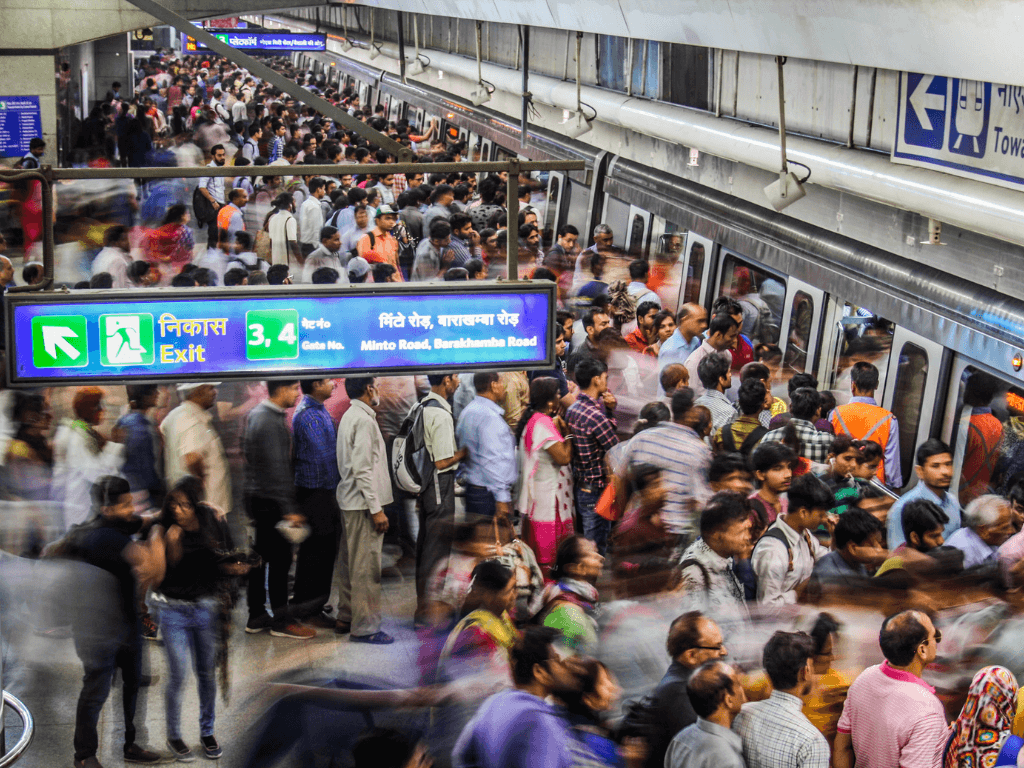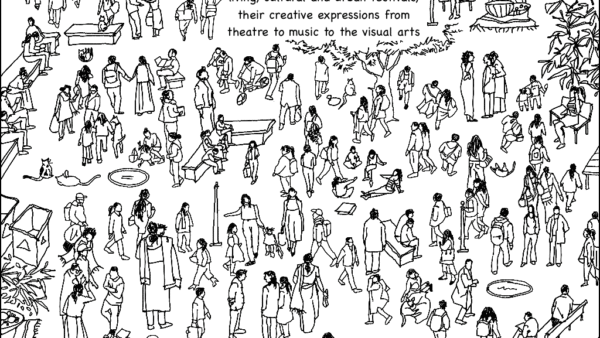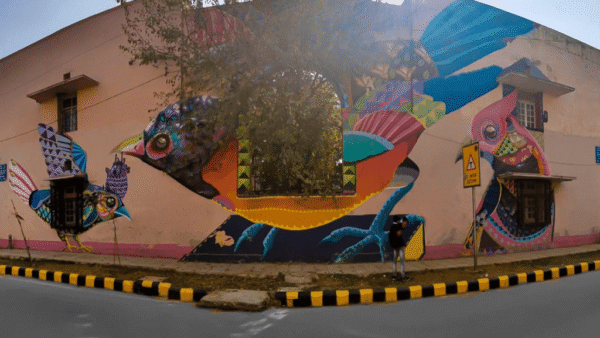New Delhi’s metro network, with more than 285 stations spread across 400 kilometres of the National Capital Region, has become a symbol of modernity and urbanisation. It altered the way some people commuted and created a new type of public space while connecting parts that were hitherto cut off from the city. For women, the metro meant a kind of freedom, making it possible to commute long distances for education and jobs. It forced people from different social backgrounds to interact. Despite all this, the metro remains a standalone element of Delhi-NCR’s cityscape, not connected to other modes of transport.
Anthropologist Rashmi Sadana documented the social interactions of the Delhi Metro in her book Metronama: Scenes from the Delhi Metro, intrigued by the ‘new forms of sociality’. In this interview to Question of Cities, she talks about the impact of the metro on Delhi on women’s mobility, how it shrank the city as “so many more places became knowable because they’re part of this single metro map,” and why the metro “is inclusive but also not equitable; it’s both.”
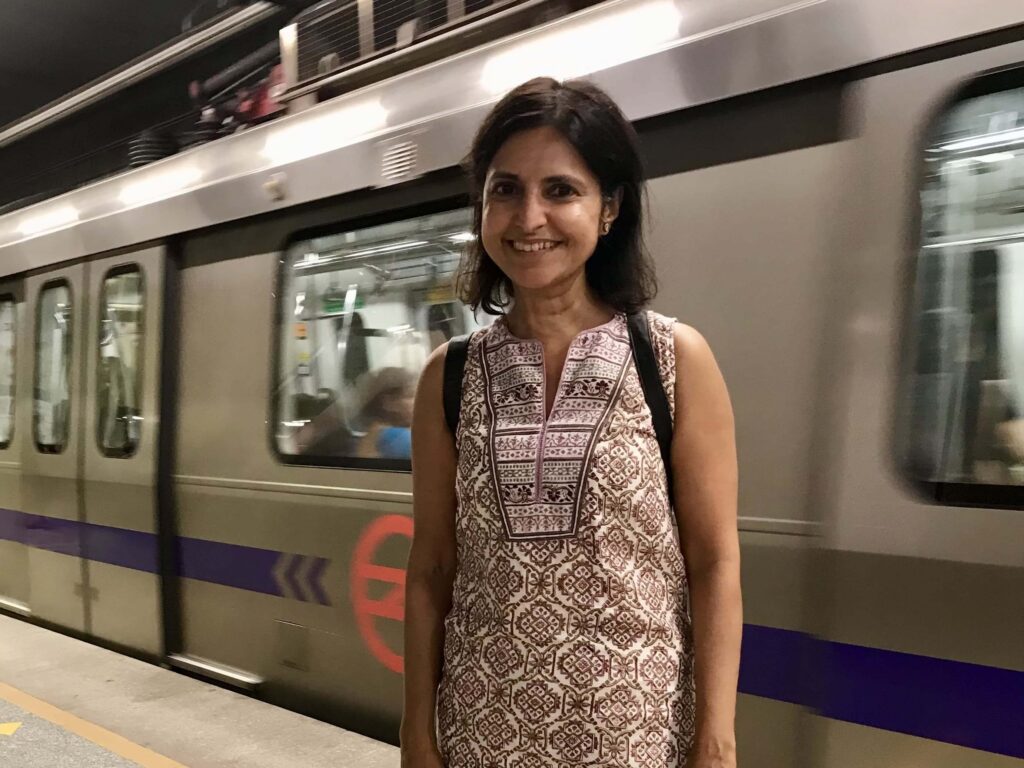
In what ways do different genders access the metro?
People are often taking the metro and then connecting to buses, vans, jeeps, e-rickshaws, and autos. The metro system is vast, but it doesn’t go everywhere, into all the nooks and crannies of the city or even all the areas of the National Capital Region. That’s why connectivity between different transport systems is important. As for the gendered aspect, I talked to many women who prefer the metro over other forms of transit because they feel safer in it. But I also spoke with many men who prefer the metro for its ease. For everyone, it is a place where they can catch their breath and enjoy the air-conditioned environment. It’s an enclosed environment in a busy city.
Does the design suit all genders, especially women who usually travel with more bags, with children, the elderly and so on?
The world over, metros favour the able-bodied since you have to walk along lengthy corridors and go up and down a lot of steps. However, metros also have international standards that require them to have escalators and elevators which increases mobility among different kinds of bodies. I met people on the metro who were vision-impaired, hearing-impaired, and even in wheelchairs. The Delhi Metro Rail Corporation (DMRC) has protocols in place for a range of riders to get on the trains and go where they want to go. In this way, the metro is more accessible compared to other forms of public transport in the city.
In your book, you mention that women don’t take a seat despite having a ticket. How would you explain this?
For people who are unaccustomed to the international and middle-class space that the metro is, they can feel unsure about how to sit or stand when they first start riding it. That’s one thing. Then there’s also the fact that people might be more comfortable sitting on the floor, as they do on trains for instance, or even in their homes. This is more a question of habits, how people’s bodies and dispositions become unconsciously imprinted by their social position.
I think there are situations and times where the metro is a social equaliser because everyone has the same right and access to seats and other spaces in the trains and on the platforms. But women have to feel that they have the right to claim that space. That may take time and repeated rides. I have talked to metro riders who became more confident over time.
Your work focused on the metro and women. Is it a women-friendly system, is one ladies coach enough?
Greater ridership by women is a good social indicator. It means more women are working, when this happens other social indicators like health and well-being improve, and cases of domestic violence decrease. Women have more independence, gain more respect in society, from their own families, even from their in-laws. Compared to peer countries, India has a very low participation of women in the workforce. So, the metro has been a vehicle to improve that because it addresses, at least partly, the safety aspect that families have concerns about when women go to work.
But if more and more women are taking the metro, then what about the ladies coach? My research shows women riding in the general coaches as well. The majority of women ride in the ladies coach but if more women ride in the general coaches, then women will feel more comfortable there. When the metro first started, there was no ladies coach. In those years, I talked to women in the general coaches. We were riding with men and felt hopeful that the men in Delhi would learn how to coexist with women, and be respectful of women in public spaces. This was a great space because of the lighting, the newness of it, and the dignified atmosphere.
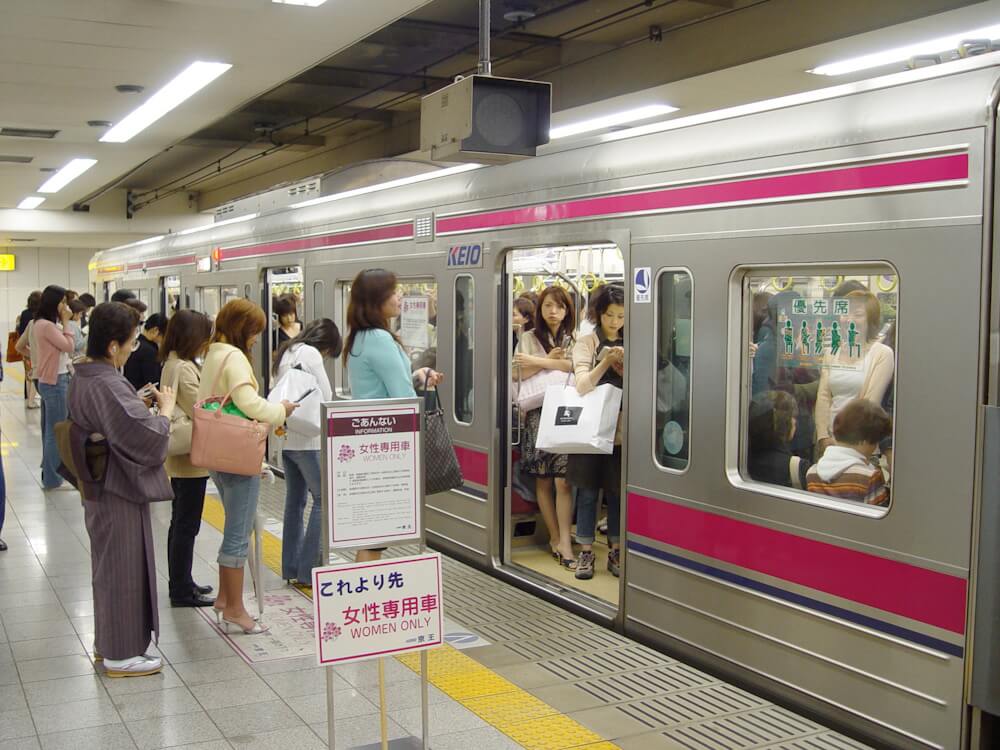
Photo: Wikimedia Commons
However, there were incidents of women being harassed. That was enough for Mr. E. Sreedharan, head of DMRC, to introduce a ladies coach. There were precedents for women-only coaches in metros in Tokyo, Cairo, Mexico City and other cities. This gave space to women but also made the general coaches much more male. I don’t think the answer is to have more ladies coaches. I hope the general coaches will have more women. It’s a question of gendered respectability because hopefully more and more women will want to ride the metro. Then, will it be half the train for women and half for men? This segregation would not work. We have to be bolder and plan metros where not having a ladies coach will be fine. This is definitely a slower but a possible social transformation. If more women ride the metro, it is achievable.
You met many women whose mobility improved after the metro. What part of the metro’s infrastructure can be emulated by other public transport systems?
Number one is lighting, especially after dusk. A major reason that Delhi’s women feel safer on the metro is the lighting. The tougher part is to have people develop a shared sense of responsibility towards public space. One of the things that makes the metro work is that there are stricter rules and regulations. If you litter or spit, a metro official or CISF personnel will fine you. When people respect a space, they will respect people in it too. It is not happening right now on most city roads. People think of the road as an extension of their garbage bins.
Then, the metro provides a model for even surfaces. The Municipal Corporation of Delhi needs to step up on this aspect for roads. There have been some improvements. At bus stops, you can now see when the next bus is coming; the buses are modernised and cleaner. I see that people of all classes want dignified spaces; people feel better in such spaces. There is an emphasis in India on dignified private spaces such as housing colonies or fancy restaurants, but there has to be a similar desire for public spaces too because people can’t live in bubbles. We all breathe the same air.
We can learn from the metro but we have to figure out how to scale it to other kinds of public spaces. Something simple like lighting and even surfaces is a start. Even though there’s more surveillance in the metro, it provides people with a sense of security; it is a trade-off. This really goes back to the question of the everyday infrastructure in our cities – getting the basics right would go a long way.
So many different lives and stories play out on the metro. How inclusive and equitable is it really?
This is a great question. The metro is inclusive for millions of people, and it cuts across many different social categories. However, it is not equitable in terms of transport in the city as a whole. This is because it privileges the kind of development that already helps people who have property nearby or people with access to the metro. That access could mean a motorcycle to get to the station or somebody who can drop them in the car or not having to think as much about paying the fare. The Delhi metro is one of the cheapest metros in the world but in the Delhi context, for many people, it is expensive. It is inclusive but also not equitable; it’s both.
Where would you place the metro in Delhi’s transport network?
In 2006, I rode the metro for the first time but my work also comes from my almost 30-year history with Delhi. When the metro started, I was, like everyone else, a joy rider. That first time was a visceral experience, of speed, but also of being encased in a new social environment with others. I knew from the first ride that the metro was going to be a game changer because like millions I too had spent years traversing the city in cars, auto rickshaws, cycle rickshaws, and buses. As a woman too, I knew it was a game changer because of its safety features. Then, there was my lens as a cultural and urban anthropologist.
What excited me about the metro as a researcher was that the scale was so big in terms of understanding the urban. The DMRC had announced that there would be phases leading to a large metro, which it now is. I had a sense early on that I would be capturing something as it was happening, as the city was transforming. I was interested in the impact of the metro on the urban landscape and new forms of sociality emerging within the trains.
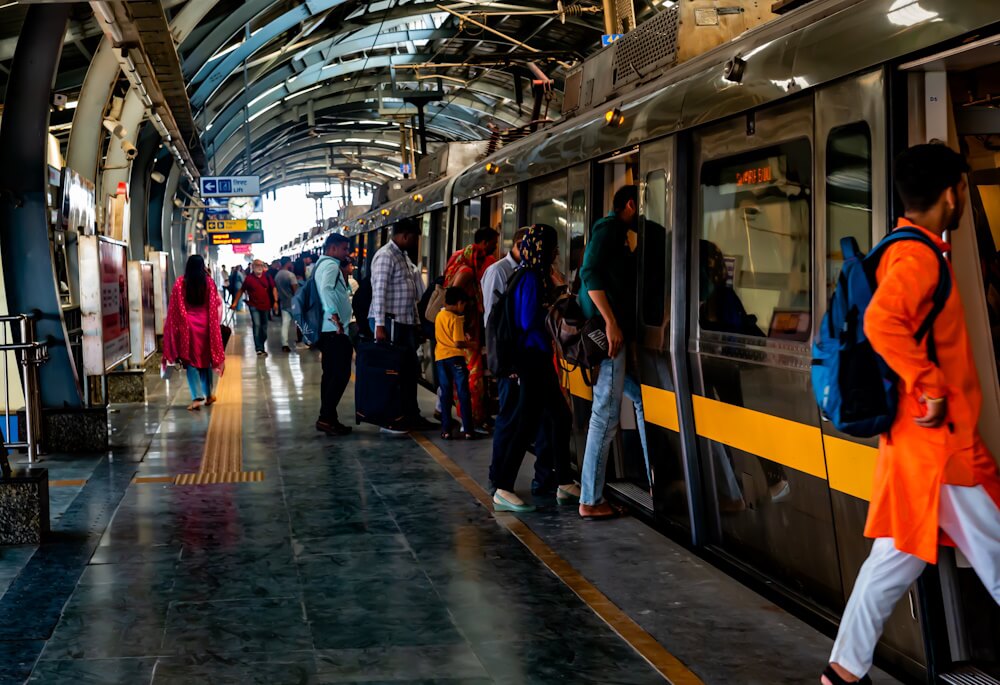
Photo: Celestinesucess/Wikimedia Commons
Looking back, how did the metro change the city and for whom?
This is where the story gets complicated because the metro is very much about urban development and the politics of land distribution, why certain projects get made and others do not. When the metro was being built, the narrative was that it was on time, without much corruption, and conformed to international standards. This was true but it was also a capital-intensive project decided at the highest levels of the governments of India and Japan, with Japanese loans covering over 65 percent of costs. It was, is, a mega-infrastructure project meant to attract further investment in the city and serve the middle classes. The vast majority of people in Delhi still get around on foot or by bus.
The interesting thing is that on the one hand, the metro is a major symbol of hyper-modernity and the shrinking city as travel times between places literally shrink, creating a time-space compression. But on the other hand, the city gets invented in a new way as it expands from the city centre to the hinterlands. The people who ride the metro range from the working class to the upper-middle class, but the majority is lower-middle to middle. Car-driving elites are less relevant to the metro story. The poor also do not ride it. I talked to low-income people who lived alongside metro stations and were certainly impacted by the metro but do not ride it because they don’t have jobs to commute to. So, the metro serves people who already have social mobility.
The other big effect the metro has had on the social life of the city is, with more than 285 stations, the system has created a series of public spaces spread across 400 kilometres of urban space. I found that the stations are new spaces for all kinds of interactions, often across social boundaries. Buses offer a mixed social space as well, but the metro is a more coherent and cohesive public space because each station is similar and replicated across the landscape. People know what to expect: electronic gates, tokens, cards, security protocols. The environment at a station is contained and highly regulated.
Do the sanitised and intimidating appearance, security and surveillance technologies, make it elitist and isolated, even unsafe?
I am glad you asked this question. When the metro first started, these were its issues. The DMRC had made this gleaming object that was clean, fast and air-conditioned but it did not integrate at all with the bus system. These were two parallel tracks. The majority of commuters were on the buses but the DMRC didn’t even want bus stops at metro stations. It wanted this pristine object which it could control.
But this does not make transport infrastructure. The whole point is the metro should let you connect to different forms of transport, which is exactly how the public transport systems in Japan work. The other thing is when the metro was being built, the DMRC did not have to deal with other urban agencies which could have meant delays, problems, and compromises. It had the mandate from the central government; it was a 50 percent central government and 50 percent Delhi government operation. That mandate led to a narrow vision which saw the metro as an engineering project but once it was made, it could not be just that, it was about people and everyday mobility.
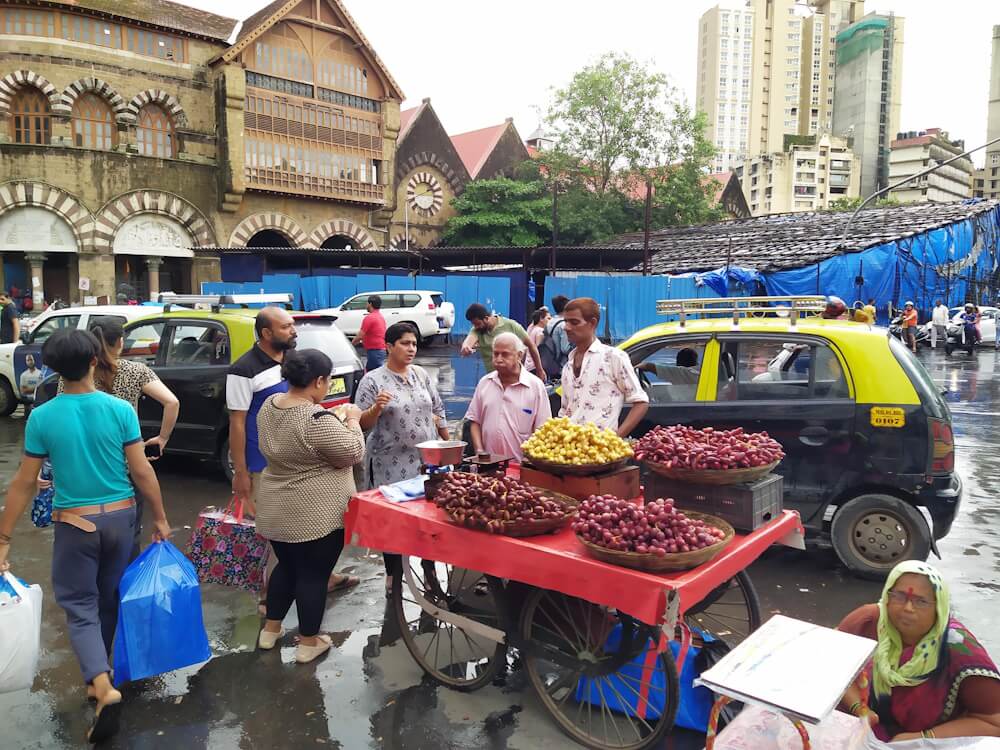
Photo: Radosław Botev/Wikimedia Commons
So, they are now working on integration with metro buses, feeders and shuttles but they still have not fully addressed the issue of connecting to other forms of transport in a seamless manner or achieving last-mile connectivity. The metro’s full potential— and benefit to the city—will not be reached until this integration happens. I should be able to take the metro from any point, get down, go to a market or a friend’s house or work, and then return to the metro station. Many people don’t take the metro because they don’t want to walk on potholed roads where traffic is moving very fast and could be hit by a vehicle. So, the last-mile connectivity is about safety but also about ridership. Which agency is working on footpaths, who is putting in the resources that were put into the metro to improve last-mile connectivity? We should have a footpath movement across all Indian cities because we love the street life, people, vendors, and all the activity.
You talk about ‘social magic’ and refer to Bogota mayor’s quote about the rich using public transport as a sign of development. India’s cities seem to be going the other way.
More cars, with their emissions and the space they take up is an example of unsustainable development. On the one hand, there’s the metro system which does try to address the question of sustainability; on the other, people in India as elsewhere in the world want cars, for status, convenience, and for protection.
The question of sustainability is not only about the health of the planet, it’s also very much about everyday life, communities, families, and individuals. The focus should be entirely on high-quality integrated transport that everyone in the city can use but, at the moment, it is not happening.
Cover photo: Chandradhar Yadav/Wikimedia Commons

